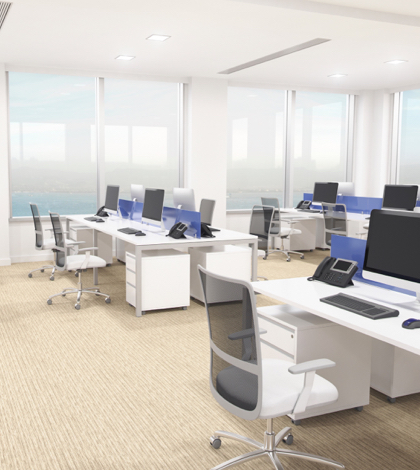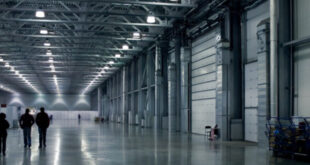Like its office market, the Inland Empire regional market just completed a decent year, but not a spectacular one. As 2016 approaches, look for more retailers to enter the local market and lease rates to creep up a little bit, but not much in the way of new development.
The year 2015 ended up being a decent one for the Inland Empire’s retail market, though ultimately it was nothing spectacular.
During the third quarter, the region’s retail vacancy rate was 9.4 percent, down .03 percent from the third quarter in 2014, according to Colliers International.
That’s still too high – most retail brokers consider a five percent vacancy rate to be the sign of a healthy market – but the number is headed in the right direction, at least for now.
The Inland Empire’s retail market showed encouraging signs in other areas during the third quarter: positive net absorption was was 433,600 square feet, up from 235,700 square feet year-over-year.
Average lease rates increased slightly during the third quarter, to $1.42 per square foot, with lifestyle centers – Victoria Gardens in Rancho Cucamonga, for example – recording the highest asking rates, $2.19 a square foot.
Single-tenant buildings had the lowest lease rates, $1.28 per square foot. Total retail inventory rose only slightly: 132.5 million square feet during the third quarter, up from 131.6 million square feet one year earlier, according to Colliers.
During the third quarter, a 185,000-square-foot Walmart Supercenter opened in Perris and just under 160,000 square feet of retail space was under construction in the Inland Empire when the quarter ended.
Those are decent numbers, but they also underscore how bad a hit the region took during the recession.
In 2007, the year before the recession hit, more than four million square feet of retail space was absorbed in the Inland Empire. Much of that came from big-box retailers like Best Buy and Bed, Bath and Beyond, some of which are now looking to sublease or find small spaces so they can reposition themselves in a tighter market.
At the moment, the Inland Empire retail market is like the overall economy, undergoing slow but steady improvement but not doing anything splashy either.
Still, that’s not a bad position to be in heading into the new year, according to one of the region’s more experienced retail brokers.
“This year was a strong year and there’s no reason to believe that 2016 will be at least as good,” said Carol Plowman, senior vice president with Lee & Associates Ontario. “We had a lot of fast-food restaurants come into the market, and lease rates were stable. I expect that to continue.”
What’s not likely to happen in the Inland Empire retail market during 2016 is new development. During the third quarter of this year, just under 160,000 square feet of retail space was under construction in the local market, down from 364,000 square feet in the same period in 2014.
New retail buildings, should they happen, probably will be build-to-suit and not speculative, said Plowman, who specializes in the Ontario-Rancho Cucamonga market.
“Any retail construction I think it will be on the east end, towards Moreno Valley,” said Plowman, who helped land much of the peripheral development around Ontario Mills. “But I don’t expect to see that much anywere. Most of property owners are holding on to their land.”
The Inland Empire retail market in 2016 will become more tenant driven, meaning landlords will have to become more creative in order to attract and keep retail tenants, Plowman said.
Plowman predicted that vacancy in the Inland Empire retail market could get down to four to six percent by the end of 2016.
That’s more optimistic than Jerry Holdner, vice president of marketing for Voit, who predicts a vacancy rate of eight next year at this time. Holdner also expects to see more positive net absorption least rates to rise maybe one to three percent.
“There’s some population growth going on in the Inland Empire, which is always good for retail,” said Holdner, who is responsible for gathering the data Voit uses in its Inland Empire quarterly reports.
Like Plowman, Holdner believes there will be little retail construction in the Inland Empire during 2016, and that whatever building does happen will take place in the Moreno Valley – Riverside market.
More restaurants and small shopping centers should appear locally during the next 12 months, but larger malls and power centers with their big-box anchor tenants probably won’t return until 2017, at the earliest, Holdner said.
During the last four years, the Inland Empire has absorbed about 500,000 square feet of retail space. That number pales in comparison to what the region was adding before the recession hit, but not all of that decline can be blamed on the bad economy.
“E-commerce is taking a big chunk out of traditional brick-and-mortar retail, and that trend is only going to continue,” Holdner said. “The Inland Empire absorbed 4.5 million square feet of retail space in 2007. I don’t think we’ll ever see a year like that again, no matter how much the economy comes back.”
Because the economy is improving and landlords have more money to spend, a lot of malls may get overhauled in 2016, said Michelle Schierberl, senior vice president with Colliers International.
“There are a lot of properties that were built in the late 1970s or early 1980s that are getting tired and need a new look, so I think we might see a few renovations next year,” Schierberl said. “I think there will be more of that than projects built from the ground up. I don’t expect to see much of that.”
Looking at the bigger picture, Schierberl is predicting slightly a mild improvement in vacancy rates, slightly higher lease rates and more online shopping, not just in the Inland Empire but in all markets.
What remains to be seen is how much consumers are willing to spend, always the ultimate question in retail.
“Most of the signs are positive now,” Schierberl said. “Interest rates are low, people have more money to spend so sales should stay up.”
 IE Business Daily Business news for the Inland Empire.
IE Business Daily Business news for the Inland Empire.


